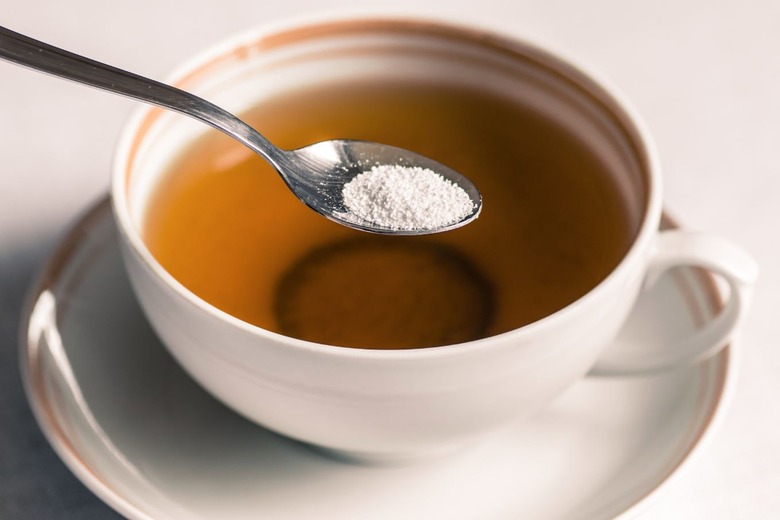Which Artificial Sweetener Tastes Best?
If you're like the majority of Americans, you might need a little something sweet in your coffee to kick-start your morning. If you don't want to be dumping spoonfuls of sugar into your breakfast drink on a daily basis, you probably turn to artificial sweetener. But which one actually tastes best?
There are currently five artificial sweeteners on the market that are FDA-approved: saccharin, acesulfame, aspartame, neotame, and sucralose. And then there's stevia, the natural, low-calorie sweetener that's also been thrown into the mix in recent years, as well as other newfangled sweeteners like monk fruit extract. We conducted an in-house taste-test of Truvia (stevia), Sweet'N Low (saccharin), Equal (dextrose with maltodextrin, aspartame, and acesulfame potassium), Splenda (sucralose), Stevia In The Raw, and Monk Fruit In The Raw — all in coffee. Here's how they stacked up:
#6: Sweet'N Low
The harsh sweetness plus the powdered texture of this sweetener was quite off-putting. We also noticed that it created a bitterness on the sides of the tongue and back of the throat.
Tied for #5: Stevia In The Raw
Stevia In The Raw prompted one reaction overall: weird. The texture was strange, as it clumped in coffee (understandably, as raw products tend to have a much different texture than granulated, processed sugars), and it was noted for its lack of sweetness.
Tied for #5: Equal
This one had a chemical-like artificial flavor, and while some said it wasn't as bad as the other sweeteners, it was still deemed to be too sweet, even in small amounts.
#4: Monk Fruit In The Raw
The newish product from the In The Raw lineup is made from monk fruit, a low-calorie fruit native to Asia. The overall sweetness was noted by nearly every taster, but opinions on it ranged. One taster compared the taste to something you'd find in the dental office, and one said it tasted like straight aspartame. Still, others said it wasn't that bad. It was called "subtly sweet" and "not as artificial" as the others.
#3: Splenda
It was called "cloyingly sweet" by one taster, and reactions were mixed about whether it was overly artificial and "weird tasting" or "not that bad." It was a pretty neutral sugar for most of our tasters — better than some, but still not great.
#2: Truvia
The flavor of Truvia was the one that came the closest to that of natural sugar. While some lamented that it still tasted artificial — and "not natural at all" — it was deemed the least offensive of the sweeteners.
